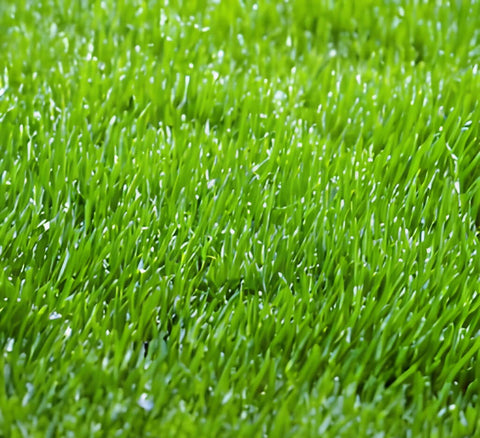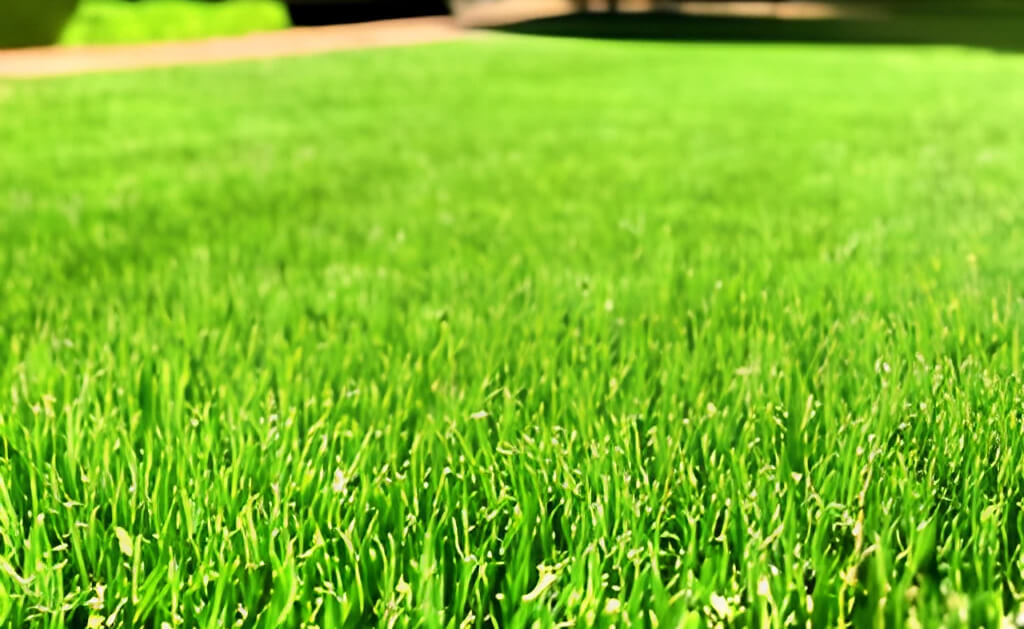Edging your lawn is an essential part of lawn maintenance, creating crisp, clean lines that define your landscape. But the question remains: when is the best time to edge your lawn? Dry or wet? The answer depends on your lawn type and desired results. In this article, we'll unravel the benefits and ideal conditions for both wet and dry edging.
Wet Edging: A Slippery Slope or a Shortcut to Success?
Wet edging can feel like a breeze. The damp soil yields easily, allowing you to slice through the grass with less effort. This is especially appealing for those with larger lawns or tougher soil types.
Another plus? Wet edging can help prevent the soil from cracking, which is a risk when edging dry ground. It's also a boon if you're planning to reseed your lawn, as it creates a smooth surface for the seeds to settle into.
However, wet edging has its downsides. The results may not be as clean and precise as dry edging. Plus, if you're using a manual edger, navigating wet conditions can be a messy and challenging affair.
Dry Edging: The Path to Precision
Dry edging is often the go-to method for achieving a professional, polished look. The firm ground allows for cleaner cuts, and it's easier to maneuver your edger, whether it's manual or powered.
Summertime is a prime season for dry edging. Regular trimming during this growth-intensive period keeps your lawn neat and reduces the risk of thatch buildup, which can harbor disease.
But dry edging can be more labor-intensive, particularly if your soil is compacted. It also poses a risk of soil cracking, especially in hot, dry weather.
Wet Edging Tips for a Flawless Finish

If wet edging is your weapon of choice, let's arm you with some expert advice for success:
- Power Up: Ditch the manual edger for wet conditions. Opt for a gas-powered or electric edger with extension cords to effortlessly glide through damp soil.
- The Line of Distinction: Choose an edging line that delivers a crisp, clean edge along your turf. This will give your lawn a professional finish.
- Patience is Key: Resist the urge to mow over freshly edged areas for at least 24 hours. Let the lines dry and become more defined for a polished look.
- Safety First: Always prioritize safety. Wear protective gear and adhere to any manufacturer guidelines.
Preparation is Key
To ensure your wet edging triumph:
- Mow Beforehand: A freshly mowed lawn provides a level playing field, making it easier to spot overgrown areas that need attention.
- Clear the Deck: Remove grass clippings, leaves, and debris for a clean canvas.
- Divide and Conquer: If you have a sprawling lawn, break the edging task into smaller sections to maintain your focus and avoid fatigue.
Not All Soil is Created Equal
Be mindful of your soil type. Wet edging is not ideal for clay soil, as the cut surfaces tend to crumble and wash away. If you have clay soil, dry edging is your best bet.
By following these tips and respecting the unique needs of your lawn, you'll be well on your way to wet edging mastery!
Dry Edging Done Right: Tips for a Precise and Tidy Lawn

Dry edging offers a path to precision for your lawn. Here's how to make it a success:
- Mow First, Edge Later: Begin with a freshly mowed lawn. This clears the way for a smooth edging experience, free from tall grass or stubborn weeds.
- Timing is Everything: Let the morning dew evaporate and the soil dry before edging. Midday is often ideal, but on humid days, wait until late afternoon or early evening when temperatures cool down.
- Choose Your Weapon Wisely: An electric edger is often the perfect tool for dry edging, especially for larger lawns.
- Sharp Blades, Optimal Results: Ensure your edger blade is sharp and angle it downward at approximately 45 degrees for clean, crisp cuts.
Reap the Rewards
Regular dry edging not only enhances your lawn's appearance but also offers practical benefits:
- Neat and Tidy: Maintain a well-defined boundary between your lawn and walkways.
- Weed Prevention: Dry edging helps prevent grass from creeping into unwanted areas, reducing the need for weeding.
- Easier Maintenance: A well-edged lawn is easier to mow and maintain, saving you time and effort.
By following these simple tips, you can master the art of dry edging and achieve a lawn that looks professionally manicured!
Safety First: Edging Your Lawn with Confidence
Edging your lawn is key to keeping it looking sharp, but safety should always come first. Here's how to protect yourself while achieving those perfect edges:
- Gear Up: Before you start, equip yourself with protective gloves and safety glasses. This simple step shields your hands and eyes from flying debris and accidental cuts.
- The Misting Trick: Lightly misting your lawn before dry edging offers a surprising advantage. It helps control dust, creating cleaner air and improving visibility for precise edging.
- Choose the Right Tool: Select an edger that suits your needs and comfort level. Whether it's manual, electric, or gas-powered, ensure it's in good working condition and that you know how to operate it safely.
- Follow Instructions: Always read and follow the manufacturer's instructions for your specific edger. This ensures safe and effective use.
- Be Mindful of Surroundings: Watch out for obstacles like rocks, roots, or buried objects that could damage your edger or cause injury.
- Take Breaks: Edging can be physically demanding. Take breaks as needed to avoid fatigue and maintain focus.
By prioritizing safety and using these simple tips, you can confidently edge your lawn and achieve stunning results without putting yourself at risk.
Achieving Your Dream Lawn: The Final Word on Edging
Edging is the secret weapon in your lawn care arsenal, adding the final touch of perfection to your outdoor space. Whether you choose wet or dry edging, the goal is the same: a clean, crisp line that defines your lawn and elevates its overall appearance.
Dry edging often reigns supreme for its precision and neatness, especially if you crave those sharp, professional-looking lines. Wet edging, on the other hand, can be a lifesaver for challenging soil types or when you need a little extra help preventing soil cracking.
Ultimately, the best edging method is the one that works for your unique lawn and personal preferences. Experiment and see which approach delivers the results you desire. Remember, the right tools, proper preparation, and a dash of safety consciousness are the keys to edging success, no matter your chosen method.
Your Voice Matters: Now that I've shared my insights, I`m eager to hear yours! Have you tried both wet and dry edging? Do you have a favorite method? Share your experiences and tips in the comments below! Let's create a community of lawn enthusiasts who help each other achieve those enviable, perfectly edged lawns.

